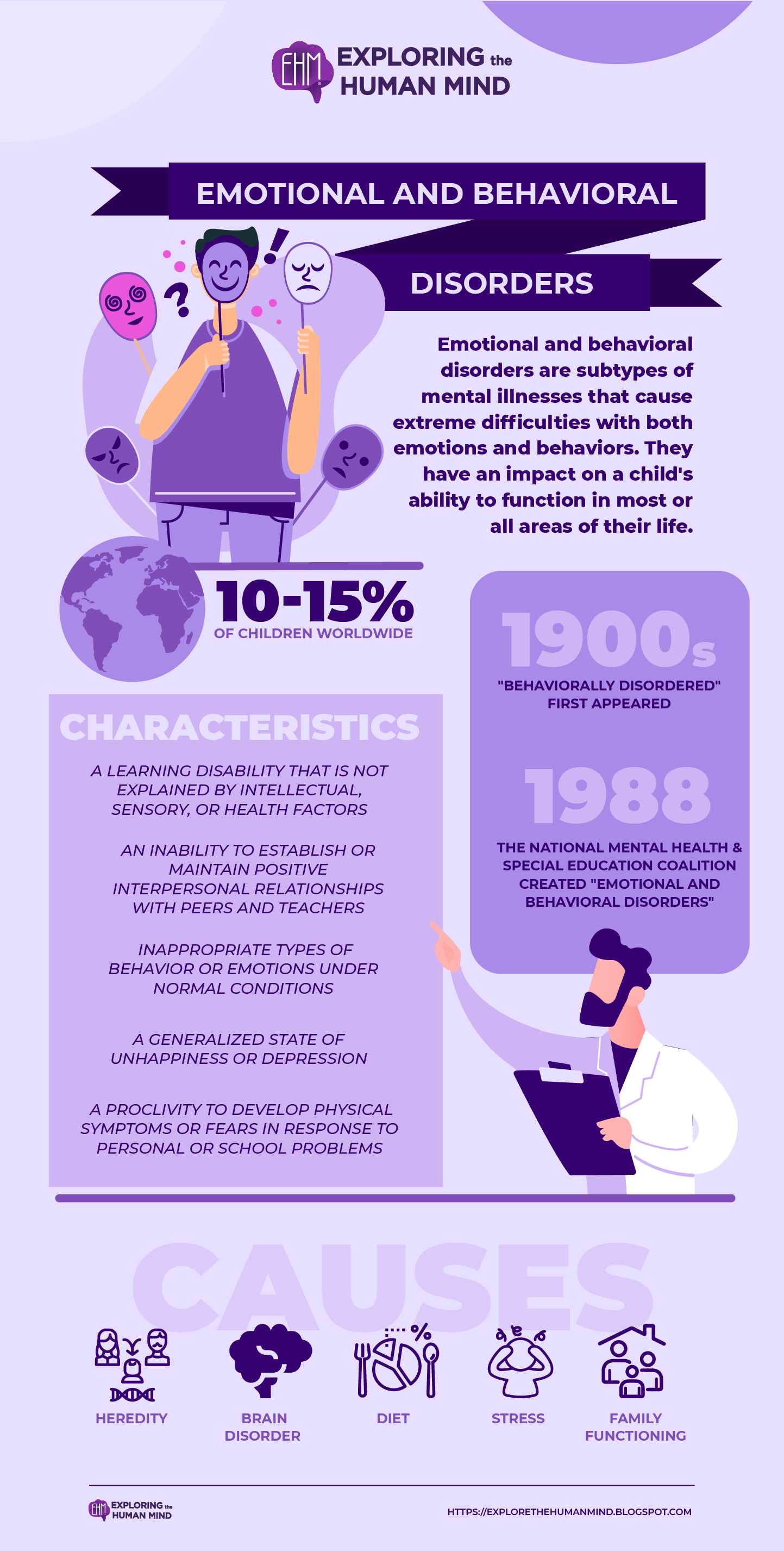Emotional and Behavioral Disorders Introduction
Prior to any research on the subject, mental illnesses were frequently thought to be a form of demonic possession or witchcraft. Because so much was unknown, there was little to no differentiation between the various types of mental illness and developmental disorders we now refer to. They were usually dealt with by performing an exorcism on the person displaying signs of any mental illness. Asylums were introduced to America and Europe in the early to mid-1800s. Patients were treated cruelly and were frequently referred to as lunatics by doctors in their professional fields.
A variety of terms have been used to describe irregular emotional and behavioral disorders. Many terms, including mental illness and psychopathology, were used to describe adults suffering from such conditions. Most people with any type of disorder were labeled with mental illness, and it was common for people with emotional and behavioral disorders to be labeled with a mental illness. However, these terms were avoided when describing children because they appeared to be too stigmatizing. The term "behaviorally disordered" first appeared in the late 1900s. Some special education professionals accepted the term, while others felt it ignored emotional issues.
The National Mental Health and Special Education Coalition, comprised of over thirty professional and advocacy groups, coined the term "emotional and behavioral disorders" in 1988 in order to create more uniform terminology.

vectors by Freepick; graphic design by Vadot
Mental illnesses can affect people of any age, race, religion, or income, according to the National Alliance on Mental Illness (NAMI). Personal weakness, a lack of character, or a poor upbringing do not cause mental illnesses. Mental illnesses can be treated. Most people who have been diagnosed with a serious mental illness can relieve their symptoms by actively participating in an individual treatment plan.
Emotional/Behavior Disorder (E/BD) is defined as a condition characterized by one or more of the following characteristics over a long period of time and to a significant degree, which has a negative impact on a child's educational performance:
- A learning disability that is not explained by intellectual, sensory, or health factors
- An inability to establish or maintain positive interpersonal relationships with peers and teachers
- Inappropriate types of behavior or emotions under normal conditions
- A generalized state of unhappiness or depression
- A proclivity to develop physical symptoms or fears in response to personal or school problems.
Possible causes:
- Heredity
- Brain disorder
- Diet
- Stress
- Family functioning
Short vs long term
A behavioural disorder, if left untreated, can have negative short- and long-term effects on an individual's personal and professional life. People may face suspension or expulsion for acting out, such as fighting, bullying, or arguing with authority figures. Adults may lose their jobs in the future. Marriages can fall apart as a result of long-term strained relationships, and children may be forced to switch schools and eventually run out of options. The most serious actions a person with a behavioral disorder may engage in, include starting fights, abusing animals, and threatening to use a weapon on others.
The earlier a behavioural disorder is identified and treated, the more likely a child or adult suffering from it will be able to control their behaviour.
Statistics
According to the CDC (Centres for Disease Control and Prevention), 5.1% of all U.S. children aged 4 to 17 years had serious emotional or behavioural difficulties, as reported by their parents. In comparison to WV's IDEA report, approximately 1,363 children (.49%) between the ages of 3 and 21 have been identified as having emotional or behavioural difficulties. Emotional and behavioural disorders affect 10-15% of children worldwide, according to the National Institute of Mental Health (NIMH).
Reference:
What Are Emotional and Behavioral Disorders? | HealthyPlace. (2022). Healthyplace.com. https://www.healthyplace.com/parenting/behavior-disorders/what-are-emotional-and-behavioral-disorders#:~:text=Emotional%20and%20Behavioral%20Disorders%20Definition&text=A%20pattern%20of%20disruptive%20behaviors,situations%2C%20and%20in%20other%20settings
Emotional/Behavioral Disorder Fact Sheet DEFINITION. (n.d.). https://wvde.state.wv.us/osp/Fact_Sheet_Behavioral_Disorder.pdf Emotional Behavioral Disorder Symptoms, Causes and Effects | PsychGuides.com. (2023, May 9). PsychGuides.com. https://www.psychguides.com/behavioral-disorders/
Emotional and Behavioral Disorders. (2022, November 11). Encyclopedia.pub; HandWiki Zheng. https://encyclopedia.pub/entry/34198






Comments
Post a Comment